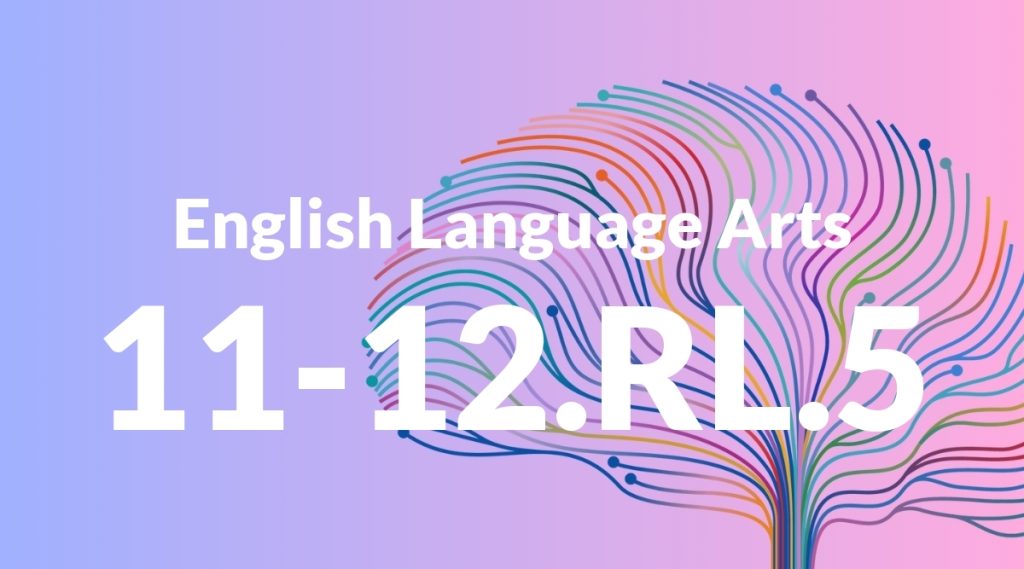Standard: 11-12.RL.5 – Analyze how an author’s choices concerning how to structure specific parts of a text (e.g., the choice of where to begin or end a story, the choice to provide a comedic or tragic resolution) contribute to its overall structure and meaning as well as its aesthetic impact.
Grade level: Grade 11-12
Subject: English Language Arts
Domain: Reading: Literature
Teacher Overview
This standard requires students to analyze how an author’s structural choices in a text contribute to its overall meaning and aesthetic impact. Understanding this standard is crucial for developing advanced analytical skills and appreciating the complexity of literary works. Students should have foundational knowledge of narrative elements and experience in analyzing simpler texts for structure and meaning.
Mastering this standard will enable students to critically evaluate literary works and understand how structural choices influence meaning and aesthetic impact. This skill is essential for advanced literary studies and media analysis.
Common Misconception 1
Some students may think that the structure of a text is arbitrary. This is incorrect because an author’s structural choices are deliberate and play a crucial role in shaping the narrative and its impact.
Intervention 1
To address this misconception, engage students in comparative analysis of texts with different structures. Highlight how these choices influence interpretation and meaning.
Common Misconception 2
Another common misconception is that structural choices are only for artistic effect. This is incorrect because these choices also contribute significantly to the text’s thematic depth and overall meaning.
Intervention 2
Use well-known texts to illustrate how structural elements contribute to both the aesthetic experience and thematic content. Discuss specific examples to clarify this point.
Prerequisite Knowledge
Students should have a basic understanding of narrative elements such as plot, character, setting, and theme. They should also be familiar with different genres of literature and have experience analyzing simpler texts for structure and meaning.
Subsequent Knowledge
After mastering this standard, students will be able to critically evaluate complex literary works, understanding how structural choices influence meaning and aesthetic impact. They will also be prepared to apply these analytical skills to other forms of media and advanced literary studies.
Instructional Activities
- Comparative analysis of different text structures
- Group discussions on narrative techniques
- Writing essays on the impact of structural choices
- Creating storyboards to visualize text structure
- Analyzing film adaptations of literary works




